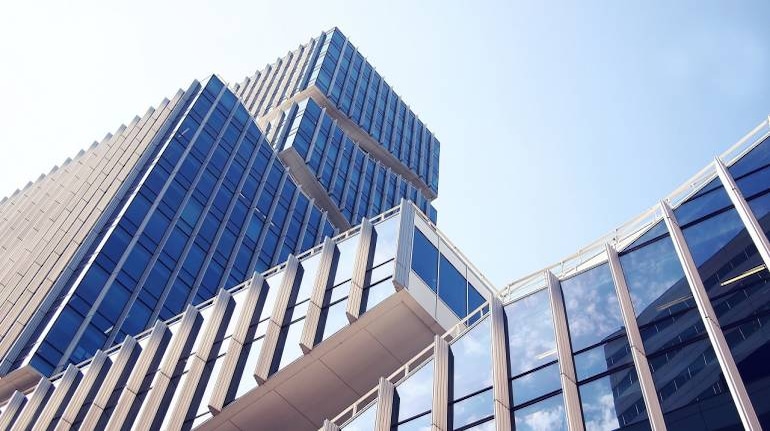



Net office space absorption in Delhi-NCR jumped 416 percent sequentially in October-December (Q4), 2020, to 1.02 million square feet as business activity resumed and leasing decisions were executed, said a report on January 27.
Noida contributed 64 percent of the net absorption, backed by strong pre-commitment in the new completions. Gurugram followed with a contribution of 34 percent, the report by JLL India said.
Three office buildings got completed in Delhi-NCR adding 1.3 mn sq. ft to the stock which stood at 125 mn sq. ft at the end of the quarter. While Gurugram accounted for 57 percent of the new completions, the rest was accounted for by Noida.
“Vacancy declined in all the submarkets except Gurugram, where few large exits were reported along with the addition of one new project. Resultantly, vacancy at the overall city level remained at similar levels,” said Manish Aggarwal, Managing Director, Delhi-NCR, JLL India.
India’s office market continues to recover witnessing a net absorption of 8.27 million sq. ft, an increase of 52 percent in Q4 2020 (Oct-Nov-Dec) when compared to Q3 2020. Except for Bengaluru, net absorption of office space improved in the other six cities (Chennai, Delhi-NCR, Hyderabad, Kolkata, Mumbai, Pune), according to JLL Research.
Hyderabad led the pack with the highest net absorption in Q4 2020. While the southern markets of Bengaluru and Hyderabad accounted for more than 50 percent of the net absorption in Q4 2020, maximum increase in net absorption (when compared to Q3 2020) was witnessed in Mumbai, Delhi-NCR and Chennai. Kolkata also witnessed a strong resurgence albeit on a lower base.
The increase in net absorption was driven by pre-commitments in new completions during the quarter. As many as 56 percent new completions were already pre-committed.
Moreover, office occupiers usually take a longer-term view while making leasing decisions and many occupiers are utilising the current situation to get attractive deals from landlords. While IT/ITeS continues to form a majority proportion, leasing activity is being driven by increased demand for office spaces from sectors such as e-commerce, healthcare, and FMCG.
The office real estate market was most impacted as lockdown measures disrupted the way we work. Corporates had to adopt work-from-home as an alternative, which brought in its wake, a new set of possibilities and challenges. Perceptions around the scale and potential of remote working changed.
Earlier, the view was that remote working as a concept would not work in India. This changed with the remote working experiment proving to be fairly successful for a majority of the organisations.
However, select large exits and space optimisation practises led to lower net absorption. IT/ITES, BFSI and co-working contributed majorly to gross leasing.
It should be noted that work-from-home presents several physical and cultural challenges with a large proportion of employees staying in multi-generational households. Work-from-home could be, at best, a supplement to the traditional way of working from office and could impact the office market demand by an estimated up to 20 percent in the medium to long term.
This dip will be counter-balanced by increasing demand for office spaces from emerging sectors like healthcare, e-commerce, and data centres. De-densification and splitting of offices are expected to further drive demand.
In another big sign of a continued recovery, new completions during the October-December quarter were recorded at 12.78 million sq. ft, an increase of 39 percent when compared to Q3 2020.
“The southern markets of Hyderabad, Chennai, and Bengaluru accounted for a major chunk (71 percent) of the total new completions in Q4 2020. On an annual basis, new completions across the top 7 cities dipped by 30 percent to about 36.34 million sq. ft in 2020 as compared to 51.62 million sq. ft in 2019. This being said, it is important to point out that new completions surpassed the average annual levels of around 34 million sq. ft witnessed during 2016-18,” said Samantak Das, Chief Economist and Head of Research and REIS, India, JLL.
“The year 2021 is expected to witness close to about 38-40 million sq. ft of new completions, while net absorption is likely to hover around 32-35 million sq. ft. This will be at par with the annual net absorption levels seen during 2016-2018,” he added.
Discover the latest Business News, Sensex, and Nifty updates. Obtain Personal Finance insights, tax queries, and expert opinions on Moneycontrol or download the Moneycontrol App to stay updated!
Find the best of Al News in one place, specially curated for you every weekend.
Stay on top of the latest tech trends and biggest startup news.